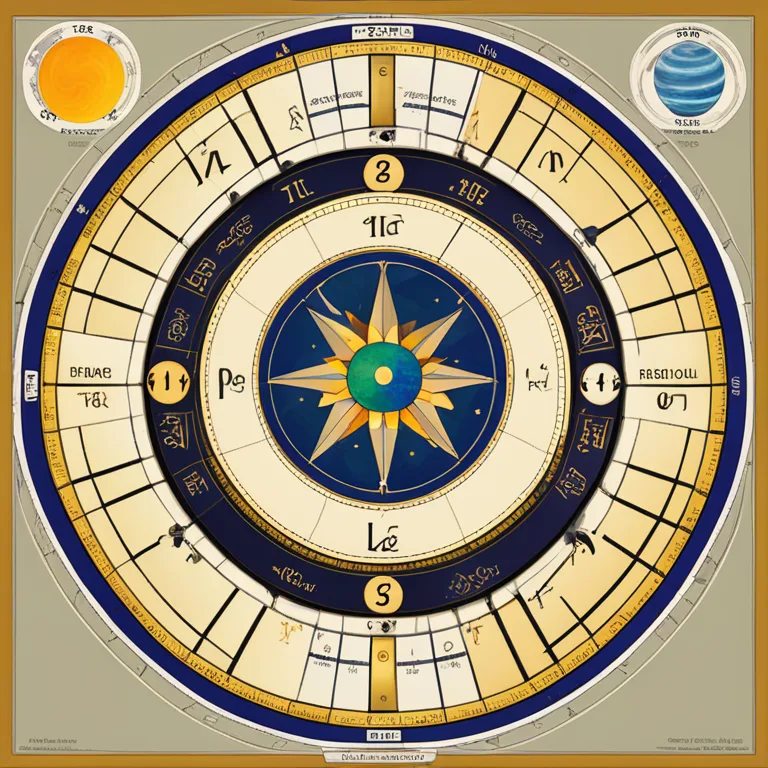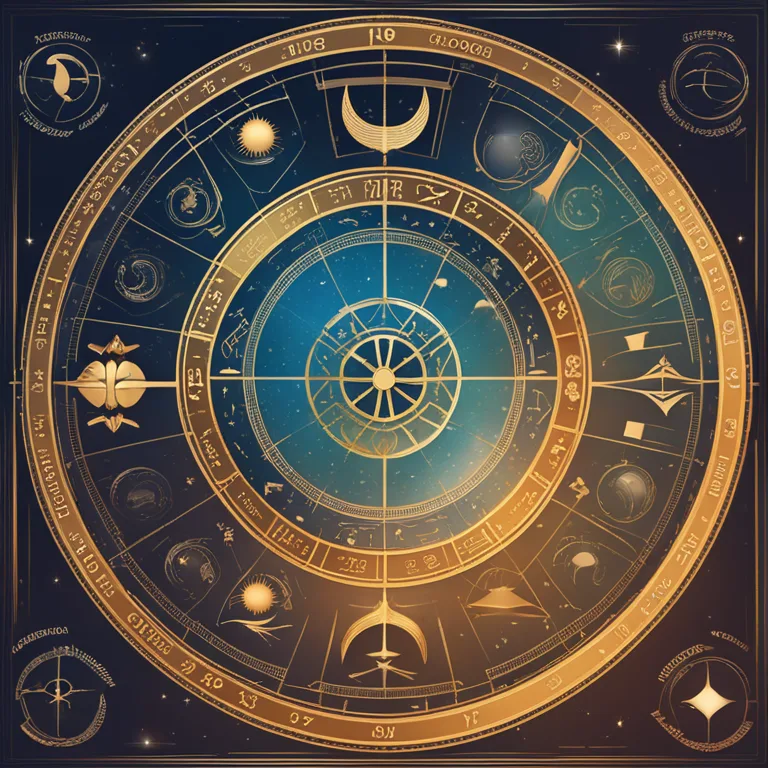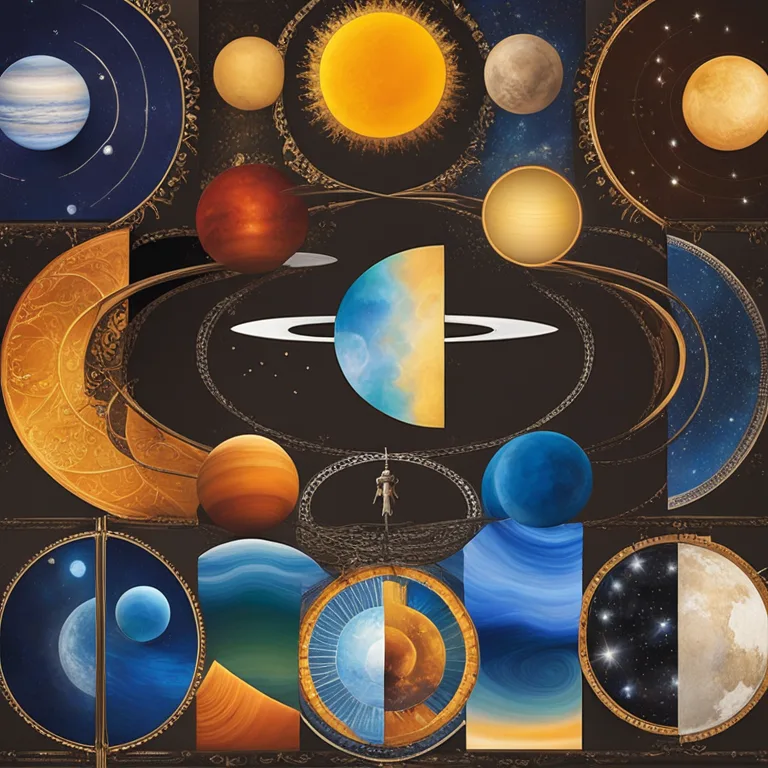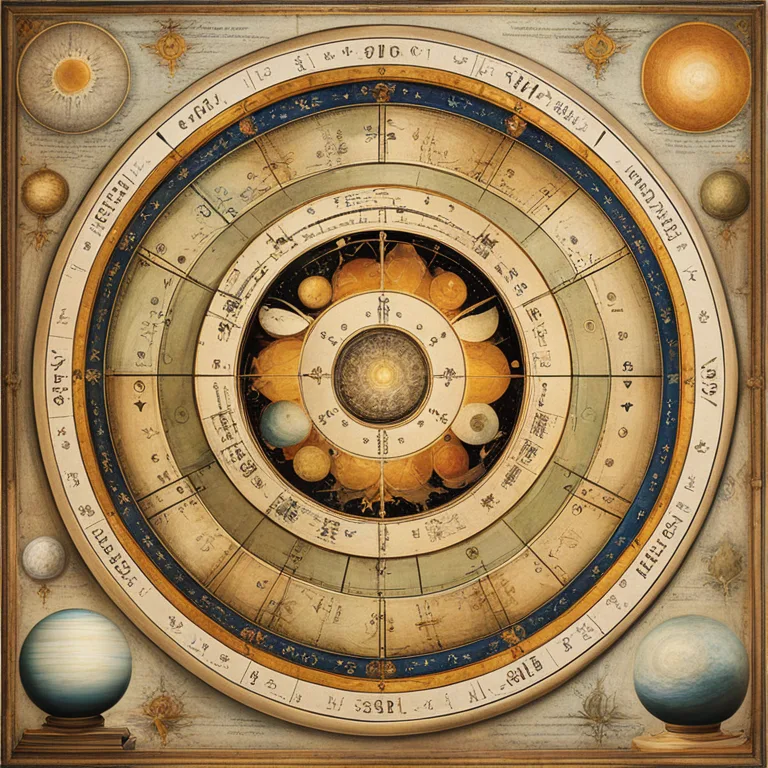
Your Guide To Birth Charts
Delve into your astrological blueprint with this comprehensive article that simplifies the complex art of birth chart interpretation.
article by Priya Deshmukh
Birth Chart Basics
The birth chart, also known as a natal chart, is essentially a map of the sky at the exact moment you were born, from the location of your birth. It contains a variety of components including planets, the sun, the moon, the ascendant (rising sign), and more. Each element is placed within a particular sign and house which influences your personality traits, habits, and life events. Think of it as the cosmic DNA—a unique imprint that can provide profound insights into your character, potentials, and life journey.

Significance of Planets and Points
In astrology, planets play a crucial role, as each one governs different aspects of our life. The Sun represents your core essence, identity, and life force. The Moon delves into your emotions, instincts, and subconscious. Mercury focuses on communication, while Venus reflects love and beauty, and Mars, your drive and aggression. The outer planets like Jupiter and Saturn represent growth and structure, respectively. Understanding the position and relationships of these celestial bodies within your birth chart can reveal much about personal dynamics and life themes.

The Zodiac Signs and Your Chart
Zodiac signs color the expression of the planets and points in your chart. There are twelve signs, each with its unique characteristics, strengths, and weaknesses. From the adventurous Aries to the compassionate Pisces, the sign a planet resides in can greatly influence how those planetary attributes manifest in your personality and behavior.

Decoding the Houses
Houses are the twelve segments of the birth chart wheel, each representing a different area of life, such as identity, resources, communication, and so on. The first house begins with the Ascendant, moving counterclockwise around the chart. The planets and signs within these houses indicate where and how you channel various energies and experiences. For example, a planet in the fourth house would highlight themes related to home, family, and roots.

Aspects: The Cosmic Dance
Aspects are the angular distances between planets in the chart and are crucial for understanding the nuances of your birth chart. They can be harmonious (trines, sextiles) or challenging (squares, oppositions). These aspects represent the relationships between different parts of your personality and how those energies work together or create tension. Recognizing these patterns can help you understand your internal dynamics and how you can grow or where you may face obstacles.
Putting It All Together
Integrating the positions of planets, signs, and houses, along with the aspects they make with each other, provides a detailed profile of an individual's personality and life trends. A birth chart isn't a fixed destiny but a set of natural inclinations and potentialities. With this knowledge, you can make more informed choices and navigate your path more consciously. Whether you're new to astrology or seeking deeper insights, your birth chart serves as a valuable tool for personal growth and self-discovery.
The Evolution of Astrology
Astrology has come a long way since its inception thousands of years ago. Modern developments, like the inclusion of dwarf planets such as Ceres or Eris, continue to influence astrological readings. Advanced computer algorithms now allow for more precise birth chart calculations, and contemporary astrologers often integrate psychological understanding into their interpretations. In this age of information, birth chart readings can be a fusion of ancient wisdom and modern science, offering guidance tailored for the individualistic and diverse society of 2024 and beyond.
Published: 12/22/2023
Modified: 12/22/2023
More predictions
Come back here soon to learn more about yourself and your future


Astrological Houses: A Comprehensive Guide
Discover the fundamental roles of astrological houses and how they influence your personal horoscope and astrology readings.


Astrological Houses & Their Role In Modern Life
Delve into the significance of the 12 astrological houses and their influence on personal astrology.